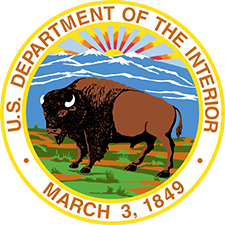Operation Lady Justice.
Throughout 2019 I hosted Reclaiming Our Native Communities roundtables across Indian Country to hear from tribal leaders and others on what Indian Affairs could to do seriously address the issue of missing and murdered American Indian and Alaska Native women, children, and men. From these roundtables came recommendations that ultimately contributed and led to the Task Force on Missing and Murdered American Indians and Alaska Natives, also known as Operation Lady Justice, established by President Trump through E.O. 13898 in November 2019. The President later declared May 5 as Missing and Murdered American Indian and Alaska Native Awareness Day.
The goals of the Operation Lady Justice include establishing protocols for new and unsolved cases; establishing multi-jurisdictional cold case teams; improving the response to investigative challenges; collecting and managing data across jurisdictions; and providing clarity on the roles, authorities and jurisdiction for those involved. Since January 2020, the Task Force, co-chaired by Attorney General William Barr and Secretary of the Interior David Bernhardt, held five in person listening sessions, four virtual listening sessions, and twelve virtual tribal consultations and launched the Task Force website: OperationLadyJustice.usdoj.gov.
On July 27, 2020 Secretary David Bernhardt Advisor to the President Ivanka Trump, and BIA Office of Justice Services (OJS) Director Charles Addington joined me in Bloomington, Minnesota, to open the first of seven offices around the country to investigate cold cases involving missing and murdered American Indians and Alaska Natives. The final office is scheduled to open later this year in Nashville, Tennessee.
Opioids & Other Illegal Narcotics.
As noted last year, in 2018 the Department launched the first-ever Joint Law Enforcement Task Force on opioids focusing on Indian Country. Led by BIA-OJS, the Opioid Task Force partners with federal, state, tribal and local law enforcement to conduct extended undercover operations and stings to get drugs and dealers off the streets.
Between 2018 and July 2020 BIA-OJS has conducted 37 Opioid Task Force operations throughout Indian Country resulting in over 800 arrests and the seizure of over 6,500 pounds of illegal narcotics with a street value of more than $32 million. We have also expanded the Community Opioid Awareness Training program to tribal communities, with the result that between 2018 and July 2020, BIA-OJS has:
Conducted 108 Opioid Community Awareness and Training programs;
Trained over 2,000 community members and service providers; and
Trained over 730 officers in Opioid identification and enforcement.
In addition to the Opioid Task Force, since 2018 BIA-OJS has trained over 1,200 law enforcement and criminal investigators trained in controlled substance identification. It has also conducted 70 tribal court assessments, 67 tribal court trainings, and the training of over 1,600 tribal court personnel. By working alongside our Native communities and other partners, I will continue to ensure that we do all that we can to get these drugs off the streets.
Tribal Access Program for National Crime Information Kiosks.
In September 2018 Indian Affairs directed the deployment of additional kiosks under the Tribal Access Program for National Crime Information (TAP). The TAP allows selected federally recognized tribes to more effectively serve and protect their nation's citizens by ensuring the exchange of critical data across the Criminal Justice Information Services (CJIS) systems and other national crime information systems, enhancing tribal efforts to:
Register sex offenders pursuant to the Sex Offender Registration and Notification Act (SORNA);
Have orders of protection enforced nationwide;
Protect children;
Keep firearms away from persons who are disqualified from receiving them;
Improve the safety of public housing; and
Allow tribes to enter their arrests and convictions into national databases.
In partnership with the U.S. Department of Justice, the first TAP kiosk went "live" on September 18, 2019 at the Anadarko Agency in Oklahoma. Since then, other TAP kiosks have been completed at the Northern Cheyenne Agency in Montana and at the Northern Pueblos, the Southern Pueblos, and the Mescalero Agencies in New Mexico. Though the COVID-19 pandemic has slowed their roll-out, additional agencies are set to receive the state-of-the-art technology in future, including the Fort Totten Agency in North Dakota; the Fort Apache, the San Carlos, and the Colorado River Agencies in Arizona; the Uintah and Ouray and the Southern Paiute Agencies in Utah; the Ute Mountain Agency in Colorado; and the BIA-OJS District III Phoenix Office. The TAP kiosks allow tribes to more effectively serve and protect their communities by fostering the exchange of critical data in several national databases through the Federal Bureau of Investigation's CJIS network.
In addition, BIA-OJS partnered with the U.S. National Missing and Unidentified Persons System (NamUs) to create new data fields to specifically capture tribal affiliation type data. This will assist law enforcement agencies with tracking and investigating missing and murdered persons throughout Indian Country. Prior to this initiative, there was no national data base to assist law enforcement with capturing and tracking missing and murdered persons who are Native or have been reported missing from Indian Country.


